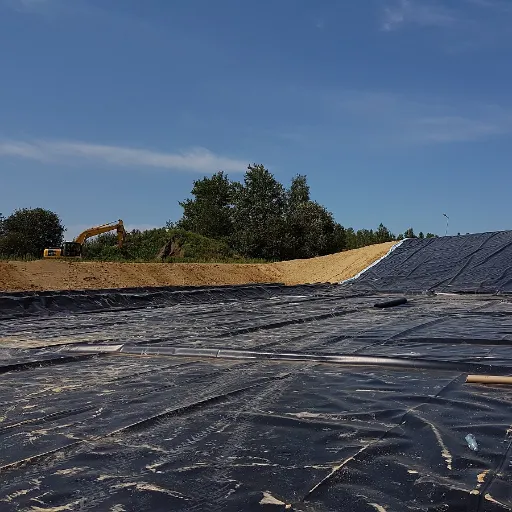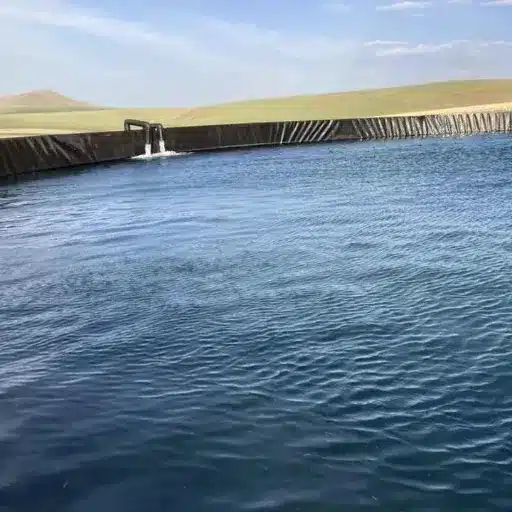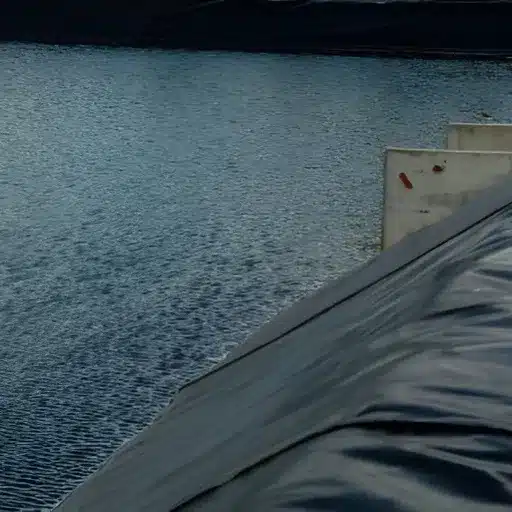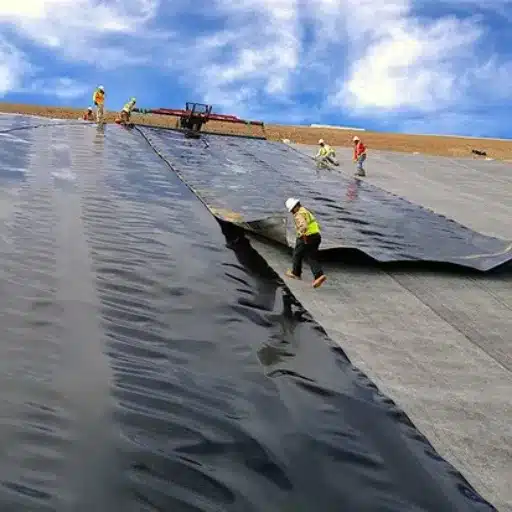High-density polyethylene (HDPE) geomembrane liners are now inseparable from various industries. Their properties have been unmatched with durability, chemical resistance, and environmental protection. The use of liners in landfill containment, water resource management, or mining operations helps to prevent contamination and maintain functionality for years. The purpose of this blog post is to delve into the developments making HDPE geomembrane liners, their contribution to sustainable development, and the reasons they are still the preferred option for engineers and project planners across the globe. With the knowledge of their distinctive characteristics and uses, you will realize that HDPE geomembranes are capable of meeting the challenges of the most difficult projects today.
Introduction to HDPE Geomembranes
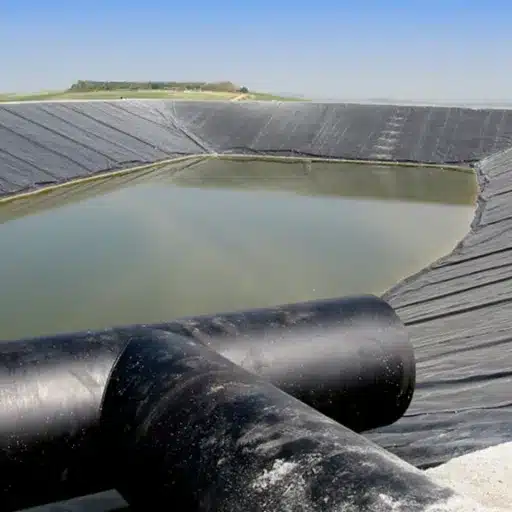
What is HDPE Geomembrane?
High-Density Polyethylene (HDPE) geomembrane is the most powerful and longest-lasting synthetic liner, which is the main choice for containment and environmental protection applications. This synthetic product is made of very high-quality polyethylene resins that are well-known for their great chemical resistance, UV stability, and resistance to environmental stress cracking. They are made to be an impenetrable barrier that prevents the passing of liquids, gases, and chemical contaminants, which is why they are widely used in industries such as mining, agriculture, wastewater treatment, and landfill projects.
HDPE geomembrane liners come in a variety of thicknesses from 0.5mm to 3.0mm, thus giving flexibility for different designs and environmental needs. The tensile strength of these liners is about 25-33 MPa, with the elongation at break being about 700-800%, which means they can withstand very tough conditions. Moreover, these liners have a very long life expectancy when taking care of it properly, as they can last up to 100 years. Also, HDPE liners are completely recyclable, thus they support the environment and comply with the global sustainability goals.
Significance of HDPE in Various Industries
Construction Industry
Geomembranes and liners made of HDPE are a must-have in the construction industry especially in environmental containment systems. They are widely used in the landfilling, lined earth, and waste water treatment plants, and chemical containment areas even in drill support zones. The global geomembrane market size, according to the most recent statistics from the industry, is expected to be USD 4.2 billion by 2028, with HDPE contributing a major part that is attributed to its cost-efficient and long-lasting qualities. Its weather resilience and chemical penetration resistance have already promised its growing use in large scale infrastructure projects.
Agriculture
The agricultural sector has a lot to gain from HDPE, which can be applied to irrigation systems, canal linings, and pond constructions. Water conservation programs have increased the demand for HDPE pipes and liners, as they are the most effective in leakage minimization and water distribution optimization. The agricultural drip irrigation market, which heavily relies on HDPE products, is expected to grow at a CAGR of 10.8% from 2023 to 2028, thus indicating their central position in the sustainable farming strategies.
Packaging Sector
The packaging industry considers HDPE to be the most prominent material, as it constitutes the essential part of bottles, containers, and plastic bags. Its combination of being lightweight and durable makes it suitable for safely keeping and moving goods. As a line of recyclable materials continues to grow worldwide, HDPE’s recyclability is a common reason for its popularity. The market reports that the demand for HDPE bottles alone will increase by around 5% per year, as consumers are increasingly wanting safer and more eco-friendly packages.
Benefits and Properties of HDPE Geomembranes
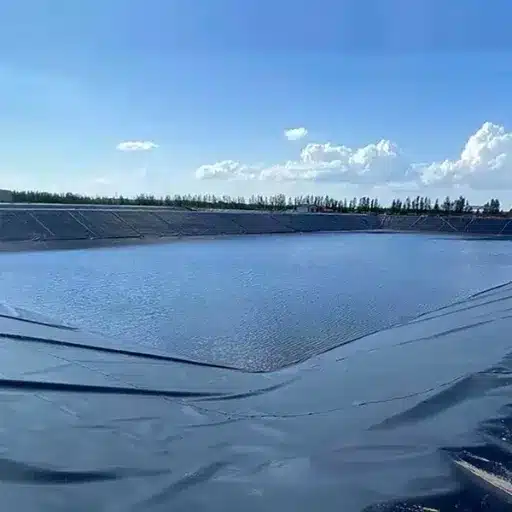
Durability and Longevity
It is the High-Density Polyethylene (HDPE) geomembranes that have become synonymous with remarkable durability and long life, thus becoming the go-to for sensitive environmental projects as well as industrial ones. The weathering, chemical exposure, and physical wear over a long period are just some of the things that these membranes are designed to withstand.
The leading factor in their longevity is the incredible resistance against UV radiation that the geomembranes possess. They can be HDPE geomembranes if they are the ones that can tolerate continuous exposure to sunlight without the property of being degraded to a large extent; hence, the applications of such membranes go to locations like water and mining reservoirs that are above ground. The results of the studies reveal that the mechanical properties of HDPE geomembranes, which were through significant UV radiation in the past, can still be held for more than 20 years under suitable conditions.
Waterproof and Chemical Resistance
HDPE geomembranes have got the reputation of being the best in the waterproofing department, and thus their use in the most demanding impermeability-based applications is justified. Their permeability has reached the lowest level possible, which gives a double assurance of liquid containment and prevention of environmental leakage. The latest statistics show that the water vapor transmission rate (WVTR) of HDPE geomembranes is equal to or less than 1 x 10^-13 g/cm·s·Pa, which means they will not be losing their barrier performance even when the conditions are very tough.
To add on this, the HDPE is also impenetrable to a broad spectrum of chemicals, including acids, bases, and organic solvents. This is what makes it fit for usage in industries, chemical containment zones, and wastewater treatment plants. By research, HDPE can withstand the aggressive chemicals’ attack, like sulfuric acid and sodium hydroxide, for a long time without any loss in integrity or performance. Moreover, the combination of such a high degree of resistance and the ability of the material to retain its flexibility and durability even at different temperatures, assures its place as a solution provider in both hazardous and non-hazardous areas.
Common Applications of HDPE Liners

Containment in Landfills
Among the most important uses for HDPE liners is their employment in landfill containment systems. By providing an impermeable barrier that not only entirely stops but also completely blocks the leakage of hazardous liquids, or leachates, into the soil and groundwater around the landfill, HDPE liners play a very important role in environmental protection. As per a study done by the Environmental Protection Agency (EPA), the sites that were provided with HDPE liners had landfill leakage rates reduced to less than 1% very effectively.
Apart from being very strong against chemical agents, these liners also possess other qualities that make them all-around waste disposal system liners; consequently, they can accept the most diverse influx of wastes being municipal, industrial, and hazardous. Moreover, the durability of HDPE liners is further backed by the fact that they resist UV radiation and oxidation which in turn makes them last even longer. Some researchers claim that under good conditions, HDPE liners in modern landfills could last 30-50 years.
Use in Aquaculture and Agriculture
Due to the above-mentioned characteristics, HDPE liners have become a necessary accessory for aquaculture and agriculture. In the aquaculture sector, HDPE liners are most often applied in the construction of ponds, tanks for fish farming, and shrimp farms. They also provide a reliable barrier that prevents water from the pond soaking down, thus creating a perfect environment for the fish and reducing the chances of getting contaminated by nearby soils. The previous industry reports say that the water retention efficiency of aquaculture systems with HDPE liners can be improved to an extent of 97%, thus giving the aquatic species the ideal conditions for growth.
The same goes for agriculture where the role of HDPE liners is very significant in saving water and facilitating irrigation systems. Commonly, they are the reason behind the non-existence of water loss through seepage and contamination when it comes to storage reservoirs, canals, and silage. Researches support that the deployment of HDPE liners in irrigation canals can lead to massive changes in water loss rates with up to 50% water being saved in arid regions. This not only helps in promoting sustainable farming but also alleviates the water crisis. Furthermore, due to their UV resistance and longevity, HDPE liners turn out to be a financially sound choice for long-term agricultural operations.
Innovations in Geomembrane Technology
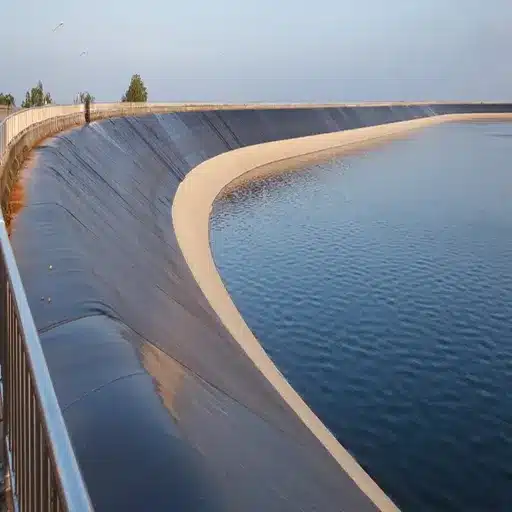
Recent Developments in HDPE Geomembranes
The recent developments in HDPE geomembranes have not only given a new and improved performance but also opened up a new wide range of applications. One such advancement is the creation of multi-layered co-extruded geomembranes that use high-end polymers to boost chemical resistance, flexibility, and life expectancy. These premium liners are able to endure very harsh environmental conditions such as sun radiation and temperature changes for a long time, which eventually leads to their use in outdoors for a long time even in such hard conditions.
The overcoming of punctures and tensile strength has been a major milestone achieved towards the manufacturing of geomembranes. The newly produced HDPE geomembranes have become so robust that it is practically impossible for their tearing because they can be stretched and still not break. It has been reported that the improved products have varying tensile strengths of 22 kN/m to above 40 kN/m relative to their thickness and application, thereby making them fit for extreme conditions like mining and holding hazardous wastes.
Smart Solutions with Geomembranes
Smart solutions with geomembranes are emerging to bring significant improvements in the way industries handle containment systems. Enhanced functionality through the provision of real-time monitoring is the main idea underlying these standard-breaking materials. For example, flexure membranes based on the new technology now come equipped with leak detection systems fitted with sensors capable of spotting not only leaks but also any abnormalities, thus assuring timely repairs and minimizing environmental risks due to the leak.
As per the latest research reports, the worldwide geomembrane market is projected to witness a compound annual growth rate (CAGR) of over 9% through the year 2030. The surge in demand for the supply of materials to the mining, water and waste management industries which are primarily driven by the need for efficiency and reliability, plays a big role in this market growth. Smart geomembranes are not only putting an end to the industrial challenges of durability but also issues like the demand for improved environmental sustainability.
Reference Sources
-
Mordor Intelligence – Geomembranes Market Report
This report provides insights into the market share, trends, and applications of HDPE geomembranes, highlighting their dominance in the industry.
Source Link -
Data Bridge Market Research – Global Geomembranes Market
This source discusses the widespread use of HDPE geomembranes in water management, mining, and waste containment, emphasizing their durability and cost-effectiveness.
Source Link -
Accio Business – Geomembrane Market Trends
This article explores the innovation and market growth of HDPE geomembranes, including their target regions and certifications, which are crucial for industry adoption.
Source Link
Frequently Asked Questions (FAQs)
How are HDPE liners produced?
HDPE liners production involves melting high-density polyethylene to extrude it into sheets. By this method, geomembranes of various thicknesses are made, which usually vary between 0.75mm and 2.0mm depending on the particular needs of the project.
What are the major uses of geomembranes?
Geomembranes find a place in the civil engineering field, more or less, in every application, including landfill liners, mining, and water conservancy projects, and secondary containment systems for the storage of petrochemicals. Their features make them perfect for stopping seepage and providing long-lasting containment solutions.
What are the differences between HDPE and LLDPE geomembranes?
High-density polyethylene (HDPE) geomembranes are recognized for their superior tensile strength and chemical resistance, while on the other hand, linear low-density polyethylene (LLDPE) geomembranes are characterized by high flexibility and elongation. The selection of either one is determined by the specific project’s containment and environmental requirements.
What are the factors that have an impact on the performance of tank liners?
Tank liners performance is determined by factors such as the geomembrane thickness, surface roughness, and the chemical nature of the materials being held. Meanwhile, HDPE tank liners stand out particularly for having high resistance to punctures and chemicals along with their excellent performance.


